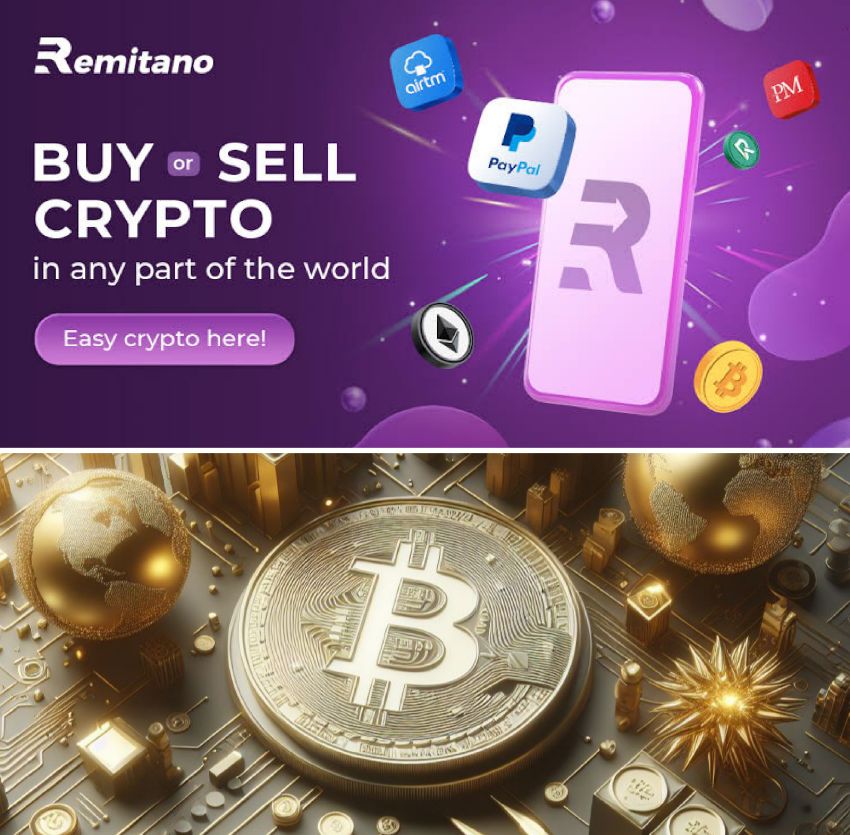RENEC Coin Launch Date
RENEC Coin Launch Date and Details
The Remitano Network Coin (RENEC) is set to officially launch on July 1, 2022. This highly anticipated crypto asset aims to power the Remitano decentralized finance and blockchain ecosystem with a variety of use cases.
Overview of RENEC
RENEC serves as the native utility and governance token for Remitano Network – a suite of DeFi products and services built on blockchain technology.
What is Remitano Network?
Remitano Network is a decentralized blockchain network developed by Remitano – a popular crypto exchange founded in 2015. The network will consist of:
- A decentralized exchange (DEX) for swapping tokens
- Decentralized finance (DeFi) lending/borrowing protocols
- Non-fungible tokens (NFTs) and other dApps
- Products for the evolving Web 3.0 and metaverse space
By building this decentralized ecosystem, Remitano aims to offer users cheaper, faster, and more secure crypto financial services compared to centralized platforms.
RENEC Token Utilities
As the native token, RENEC will have the following utilities:
- Paying gas fees – RENEC is used to pay network fees for executing transactions
- Transaction discounts – Paying fees in RENEC offers discounts up to 40%
- Staking/DeFi rewards – Users can stake RENEC to provide liquidity and earn yield
- Voting/governance – RENEC lets holders vote on platform upgrades and proposals
In addition to these utilities, RENEC will likely emerge as a speculative investment asset traded on exchanges.

On Remitano.com, you can Buy and Sell Bitcoin and 15 other Altcoins worldwide. It is the Top one P2P marketplace.
RENEC Launch and Distribution
RENEC tokens will officially launch and become transferable on the Remitano Network mainnet on July 1st, 2022.
Here is the distribution and release schedule for the 10 billion RENEC total supply:
- 5% to Founding Team – 6 month vesting
- 5% to Advisors and Partners – 6 month vesting
- 15% to Community Rewards – Distributed over 48 months
- 25% to Market Expansion Fund
- 50% to Mining Rewards – Distributed over 96 months
Out of the gate, only mining rewards will distribute RENEC coins to users. The 25% allocation to the market expansion fund will also likely play a role in circulating tokens.
How to Acquire RENEC Crypto
As mentioned above, mining rewards are the only way to earn RENEC until the official launch date. Here are more details on mining and other acquisition methods:
Mining RENEC
Remitano exchange users can already mine RENEC by providing liquidity in market making bots and executing trades. RENEC payouts occur daily based on trading/liquidity activity.
Mining will account for the majority of RENEC distribution over the next 8 years.
Buying RENEC Post-Launch
From July 1st onwards, RENEC will be purchasable on centralized and decentralized crypto exchanges. RemiLab – Remitano’s decentralized exchange will likely be the first platform to offer RENEC trading.
Given RENEC’s substantial mining rewards and diverse utility, it may emerge as a popular asset among crypto investors and DeFi participants. This could create buy pressure on exchanges.
RENEC Airdrops
Based on Remitano’s history with its REMI token airdrops, long-time/active exchange members may qualify for RENEC airdrops around major network milestones.
This helps build community loyalty and provides users with a stake in the ecosystem.
No further details on potential RENEC airdrops are available yet. As the launch approaches, the team may reveal more information.
Why RENEC Launch is Important
RENEC’s full launch enables the realization of Remitano Network’s goals and vision to deliver cheaper, faster, and more decentralized crypto services.
Here’s why the token launch matters:
1. Activates DeFi and dApps
RENEC powers the entire suite of DeFi products and dApps built on Remitano Network – like lending protocols and NFTs. The launch circulates RENEC among users to activate these services.
2. Starts Governance
As a governance token, a circulated RENEC supply enables community voting on platform upgrades like technical changes or adding new features. Shared control will be in the hands of participants.
3. Adds Value to Remitano Ecosystem
RENEC integrates with services like the Remitano exchange and RemiLab DEX to boost utility and reduce fees. This adds further value to the company’s ecosystem.
In turn, already loyal exchange users will likely seek RENEC exposure to maximize these benefits.
The RENEC launch and listing should therefore attract significant interest in Remitano Network’s offerings.
Is RENEC a Good Investment?
As covered throughout this post, RENEC has some compelling points that could make it a worthwhile crypto investment:
- Large and growing total value locked (TVL) in Remitano Network’s DeFi products will create long-term RENEC demand.
- Transaction fee discounts for using RENEC provides incentive to buy and hold.
- Speculation on exchange listings and partnerships could boost the token’s value.
- Loyal exchange user base from Remitano may buy RENEC to participate in staking rewards and governance rights.
- Scarcity from long mining schedule (8 years) prevents excessive inflation.
That said, RENEC is still an emerging asset launching in a volatile crypto market amidst regulatory uncertainty. Investing carries risks, so proper research is advised before buying.
As blockchain adoption increases over the coming years, RENEC could prove to be a breakout crypto asset powering mass usage of DeFi and Web 3.0 apps.
Conclusion
RENEC’s launch on July 1st, 2022 officially begins Remitano Network’s ambitions to offer fast, affordable, and decentralized financial services to crypto users globally.
Backed by an established centralized exchange, RENEC unlocks governance, staking, trading discounts, and other DeFi benefits to provide lasting utility and value for holders.
While risks exist, RENEC’s diverse use cases within a large existing ecosystem give it intriguing breakout potential. Crypto investors and believers in the Web 3.0 revolution should absolutely keep RENEC on their watchlists.
The countdown towards the full go-live is on!
Frequently Asked Questions
When does RENEC launch?
RENEC officially launches on the Remitano Network mainnet on July 1st 2022. This marks its accessibility to transfer and trade freely on exchanges.
Where can I buy RENEC tokens?
At launch, RemiLab DEX will likely be the first exchange to offer RENEC trading. Later on, centralized exchanges may list RENEC pairings as well.
How much will RENEC tokens cost?
RENEC’s opening price on July 1st is unclear. Upon listings, normal supply/demand market dynamics will determine valuation based on adoption and other factors.
What will the RENEC supply cap be?
The total fixed supply cap for RENEC is 10 billion tokens. Thisenqueue_edge (node, edge);
return !(bits & bit_mask);
}
/* Sets bit within the bitmap for an edge (bits within the bitmap
* are indexed linearly). */
static inline void l4310_enqueue_edge (
l4310_node *node, l4310_edge *edge)
{
unsigned offset = edge - &node->root->edges[0];
unsigned bit_mask = 1u << (offset % CHAR_BIT);
char *bits = get_track_bits (node);
bits[offset / CHAR_BIT] |= bit_mask;
}
/* Initializes front and back search pointers. */
static inline l4310_search *
l4310_init_search (l4310_table *table, bool front)
{
l4310_search *sp = xmalloc (sizeof *sp);
sp->sp = front ? &table->front : &table->back;
sp->queue = priority_queue_create (
dummy_prio, dummy_comp, STRUCT_FLAG_NONE);
sp->next_node = NULL;
sp->next_edge = NULL;
sp->status = SEARCH_INITIAL;
return sp;
}
static inline void
l4310_free_search (l4310_search *sp)
{
priority_queue_destroy (sp->queue);
free (sp);
}
/* Examines and queues up the next node to search from. Returns
* true and updates next_node/next_edge if the next node is
* acceptable, false otherwise. */
static bool
l4310_get_next (l4310_search *sp, l4310_table *table)
{
switch (sp->status) {
case SEARCH_INITIAL:
sp->status = SEARCH_VISITED;
/* Fall through. */
case SEARCH_VISITED:
while (!priority_queue_is_empty (sp->queue)) {
l4310_node *node
= priority_queue_pop (sp->queue);
priority_queue_clear (sp->queue);
if (!front_reached (sp)
&& l4310_visit_switch (node, sp)) {
sp->next_node = node;
return true;
}
if (check_tag (sp)
|| !l4310_visit (node, sp, table))
continue;
sp->next_node = node;
return true;
}
sp->status = SEARCH_DONE;
/* Fall through. */
case SEARCH_DONE:
default:
return false;
}
}
/* Tries to advance next_edge along the current node's edge list.
* Returns true if successful, false otherwise. */
static inline bool
l4310_next_edge (l4310_search *sp)
{
if (sp->next_edge != NULL) {
sp->next_edge++;
return (sp->next_edge
- sp->next_node->root->edges < L4310_MAX_EDGES);
} else {
sp->next_edge = sp->next_node->root->edges;
return true;
}
}
/* Returns the current node's next edge as an l4310_edge pointer, or
* NULL if no more. */
static inline l4310_edge *
l4310_current_edge (l4310_search *sp)
{
return sp->next_edge;
}
/* Checks if edge E reaches the next_node for search S. */
static inline bool
l4310_leads_to (const l4310_edge *e, const l4310_search *s)
{
return e->dst == s->next_node;
}
/* Attempts to add node to the visited list.
* Returns true if done, false on failure. */
static bool
l4310_visited (l4310_node *node, struct l4310_search *sp)
{
unsigned int idx = node - sp->sp->nodes;
if (bitmap_is_set (sp->sp->visited.bm, idx))
return false;
bitmap_set1 (sp->sp->visited.bm, idx);
return true;
}
/* Initializes search S. */
static void
l4310_init_visited (l4310_search *sp, int n_vertices)
{
sp->sp->visited = bm_words_alloc (n_vertices);
bitmap_set (sp->sp->visited.bm, 0, n_vertices, false);
}
/* Resets all visited bits. */
static void
l4310_clear_visited (l4310_search *sp)
{
bitmap_set (sp->sp->visited.bm, 0, sp->sp->visited.size, false);
}
/* Returns visited bits. */
static struct bitmap l4310_get_visited (l4310_search *sp)
{
return sp->sp->visited;
}
static bool
l4310_visited_get (l4310_search *sp, l4310_node *node)
{
return bitmap_is_set (sp->sp->visited.bm,
node - sp->sp->nodes);
}